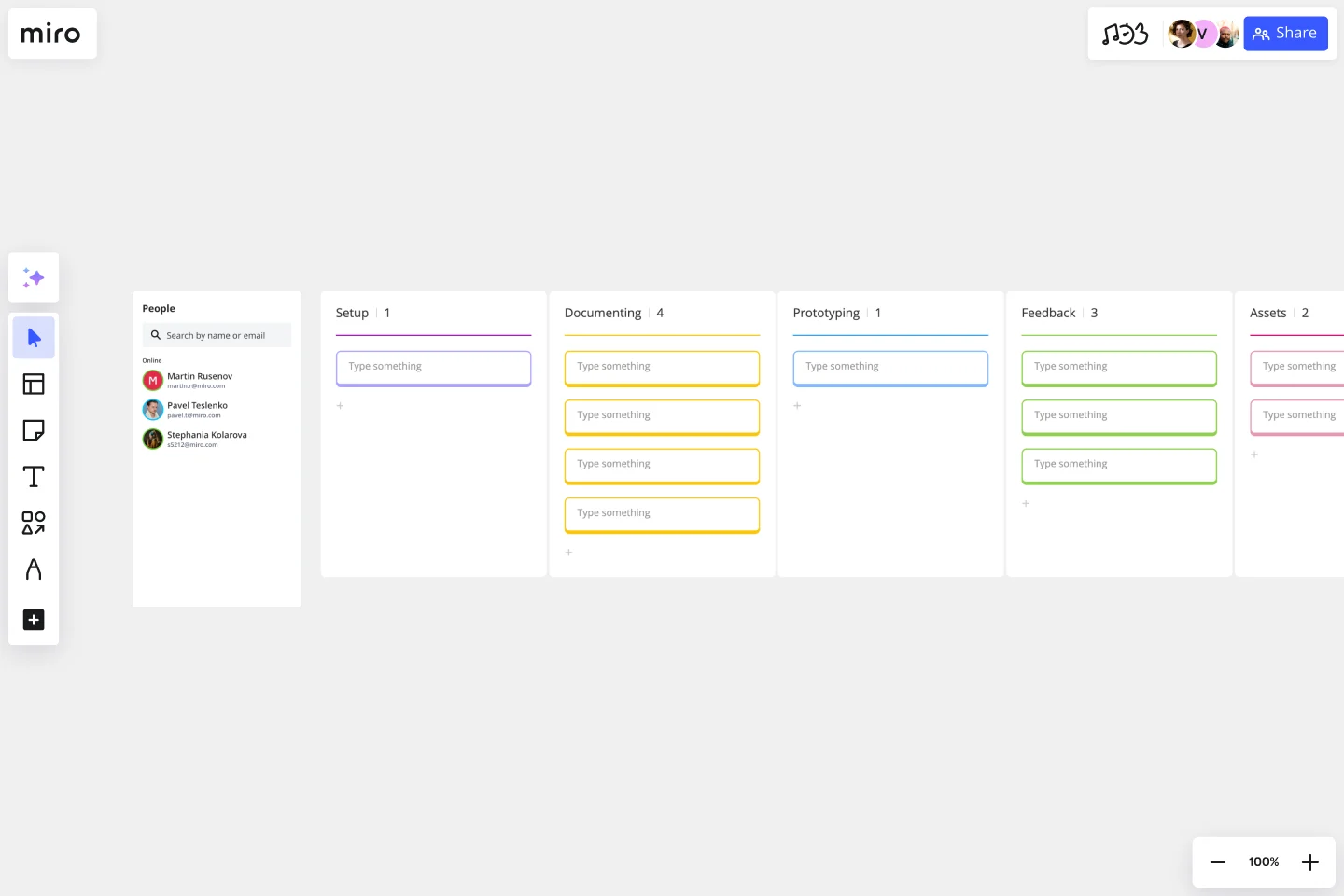Feature Planning Template
Use our Feature List Template to develop a process for building your feature so you can hit the ground running. Create a clear and repeatable process now for developing new features.
About the Feature Planning template
What is Feature Planning?
Designing a feature is no small feat. At any point during the process, a variety of teams, stakeholders, timelines, and constraints may come into play. The steps are numerous: everything from prototyping to gathering feedback. And then, of course, you have to create documentation along the way.
Feature Planning allows you to develop a process for building your feature so you can hit the ground running. As you create your product or iterate on it, you can have a clear process in place that allows you to save time.
What steps should you take to engage in Feature Planning?
Step 1 - Gather resources and build a timeline. Start by ensuring you know which stakeholders are going to be involved in the project, what budget you have to work with, and whether there are any key deadlines. Get everyone in the same room to have an initial meeting, ensuring your team is on the same page. Agree on a goal for your feature, and decide on any metrics that will show whether you’ve reached your goal.
Step 2 - Map out your feature. Think about user flow and use cases. Don’t try to sketch out any designs just yet. Instead, concentrate on understanding your user, their needs, and why they might want this particular feature.
Step 3 - Prototype. Now that you have your map in place, you can start designing the actual feature. Sketch it out. Don’t be afraid to get creative.
Step 4 - Gather feedback. Give all your stakeholders enough time to review. Compile your feedback so you can come back to the table and iterate if necessary. Solicit comments on your design and UX copy.
Step 5 - Iterate!
Step 6 - Build your feature. Once you’re confident in your design, you can go ahead and build the feature itself.
How do you use the Feature Planning template?
Start with our pre-made template, making any changes you’d like to suit your particular needs. Invite team members to join your board and collaborate. Use the @mention or video chat if you need to get input from others. You can upload other file types such as documents, photos, videos, and PDFs to store all the relevant information in one place. You may also find it useful to link to or embed other boards such as the Product Roadmap or Communication Strategy.
Who should use the Feature Planning template?
Anyone who’s involved in the development, release, testing, and promotion of features can use the Feature Planning template. This is likely to include members of the product, engineering, marketing, and sales teams.
Get started with this template right now.
DevOps Roadmap Template
Works best for:
Documentation, Product Management, Software Development
DevOps teams are constantly creating code, iterating, and pushing it live. Against this backdrop of continuous development, it can be hard to stay abreast of your projects. Use this DevOps Roadmap template to get a granular view of the product development process and how it fits into your organization's product strategy. The DevOps Roadmap lays out the development and operations initiatives you have planned in the short term, including milestones and dependencies. This easy-to-use format is easily digestible for audiences such as product, development, and IT ops.
Kanban Successful Evolutionary Change
Works best for:
Kanban Boards, Agile Methodology, Agile Workflows
Kanban Successful Evolutionary Change template guides organizations through the process of implementing Kanban methodology for gradual and sustainable workflow improvement. By emphasizing incremental changes and continuous feedback, this template fosters a culture of continuous improvement and adaptability. Teams can visualize their workflow, identify bottlenecks, and implement changes iteratively, leading to improved efficiency and productivity.
Customer Touchpoint Map Template
Works best for:
Desk Research, Product Management, Mapping
To attract and keep loyal customers, you have to truly start to understand them—their pain point, wants, and needs. A customer touchpoint map helps you gain that understanding by visualizing the path your customers follow, from signing up for a service, to using your site, to buying your product. And because no two customers are exactly alike, a CJM lets you plot out multiple pathways through your product. Soon you’ll be able to anticipate those pathways and satisfy your customers at every step.
Empathy Map for Educational Purposes
Works best for:
Product Management
Enhance your educational approach with the Empathy Map for Educational Purposes template. This tool helps educators understand students' perspectives, needs, and emotions. Use it to create a more empathetic and effective teaching strategy, ensuring that your educational content resonates with and supports your students. Ideal for teachers and educational planners aiming to improve student engagement and learning outcomes.
Simple Project Plan Template
Works best for:
Project Management, Strategic Planning, Project Planning
A simple project is a North Star for your team, helping them answer any big questions about the project. The project plan should describe the nature of the plan, why you’re doing it, how you’ll make it happen, how you’ll carry out each step of the process, and how long each step is projected to take. If you’re a project manager or team lead, use this template to start a simple project plan, which can then be adapted to suit internal team projects or external client partner projects.
The Agile Manifesto - Pocket Sized Principles
Works best for:
Kanban Boards, Agile Methodology, Agile Wokflows
The Agile Manifesto - Pocket Sized Principles template distills the core principles of agile methodology into a concise and actionable format. By providing a visual reference, this template reinforces agile values and principles, guiding teams towards collaborative, adaptive, and customer-centric practices. This template serves as a reminder of agile principles and encourages teams to embody these principles in their daily work.
